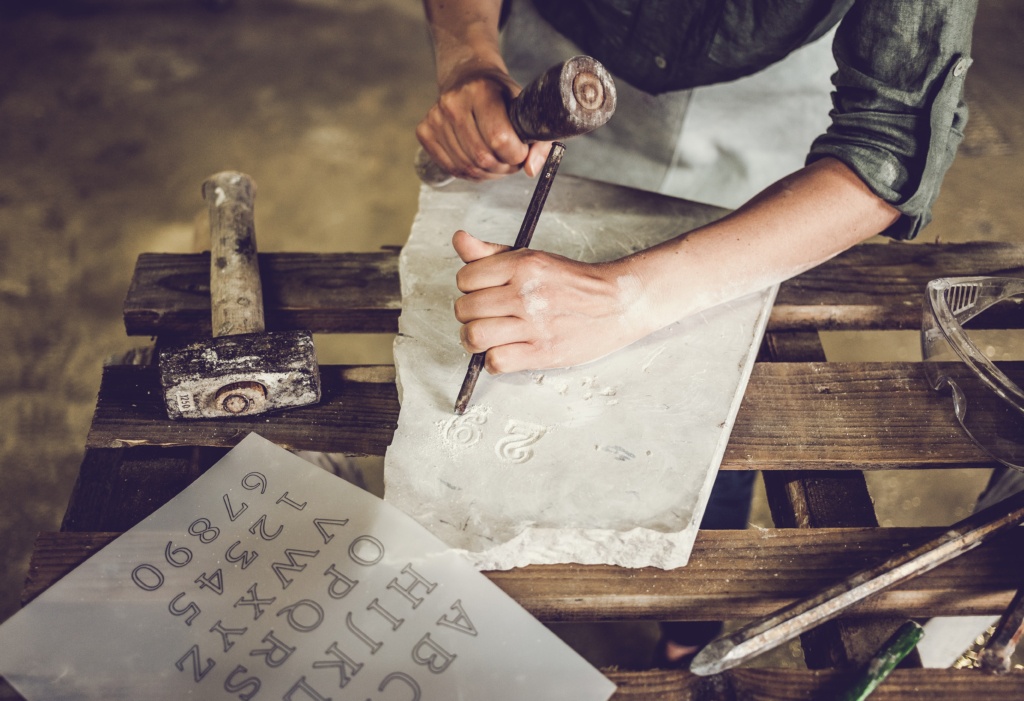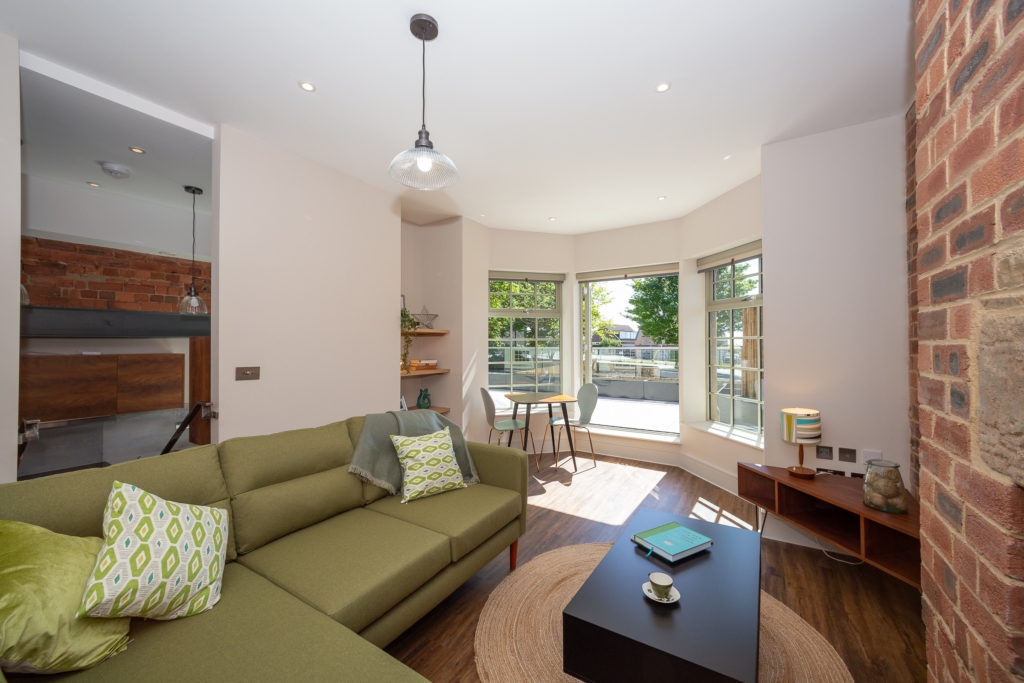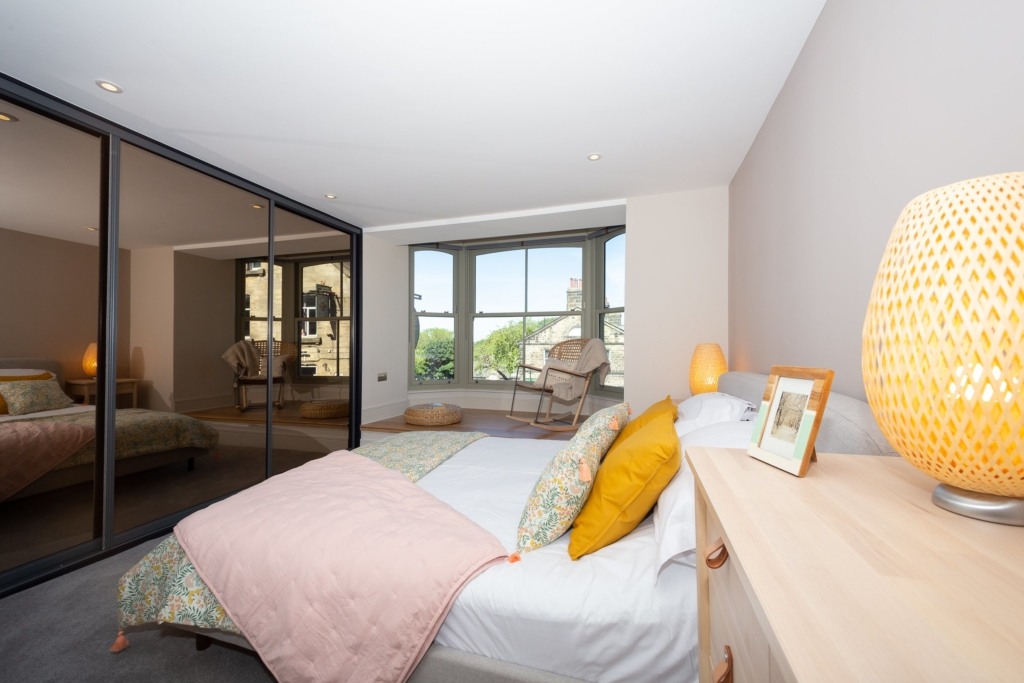Horsforth
A town with an intriguing history
Register here if you are interested in renting one of our properties in Horsforth
Historical records of Horsforth go as far back as the Domesday Book of 1086. The importance of its location grew because of its proximity to the River Aire, and it is believed that Horsforth took its name from the old English hors or possibly horsa (‘horse’), plus the word ‘ford’ – thus meaning ‘horses ford’ – evolving into a thriving community throughout the centuries.
Until 1539, land in Horsforth was under the control of Kirkstall Abbey, but when Henry VIII presided over the dissolution of the monasteries, Horsforth was partitioned and sold off to five prominent families. One of them – the Stanhopes – who would grow their influence over the centuries, played an integral role in the evolution of the village, well into the 18th century and in doing so, became synonymous with Horsforth’s development.
The Stanhope family lived in what is known to this day as Horsforth Hall Park and while the old hall no longer stands, it was the centrepiece of the village from its completion in 1707 until it was demolished in the 1950s after being awarded to the people of Horsforth some 20 years earlier.
Lying about five miles north-west of Leeds city centre, until the mid-19th century Horsforth was an agricultural community, but it expanded rapidly with the growth of nearby Leeds at the onset of the Industrial Revolution.
From 1820, Horsforth was known for its tannery founded at Woodside in about 1820 by the Watson family, later becoming a soap factory.
It was also renowned for its fine quarries, which dated back to medieval Leeds. Brick from these quarries, known as Horsforth stone, figured largely in many local buildings, shaping the architectural profile of Horsforth and the surrounding areas. For example, not only did the Horsforth quarries supply Kirkstall Abbey with building materials and millstones in the medieval period, they provided stone for Scarborough’s seafront and sandstone from the Golden Bank Quarry, travelling as far afield as Egypt.
Historically a township in the parish of Guiseley, by the end of the 19th century, with the introduction of the railways, turnpike roads, tramways and the nearby canal, Horsforth had grown into the biggest village in England according to records from this time and was playing an increasingly important role within the Yorkshire economy, becoming a focus for almost all forms of public and commercial transport as a key commercial and residential location.
Horsforth also played its part during the war years, funding a warship, HMS Aubretia, solely through donations totalling £241,000 from local people. Much later, in 2000, their contribution to the war effort would be recognised by US President, Bill Clinton, in a letter he sent to MP Paul Truswell, which can be viewed in the Horsforth Village Museum.
Today, Horsforth is a suburb and civil parish within the City of Leeds Metropolitan Borough and benefits from efficient transport links including buses, trains and the nearby airport, reinforcing its convenient location and desirability as a prime residential area. Not only is it a vibrant suburb, particularly sought after by young professionals, who love its range of shops, bars, restaurants, supermarkets and niche retail outlets, but it was also rated the best place to live in Leeds in a recent survey.
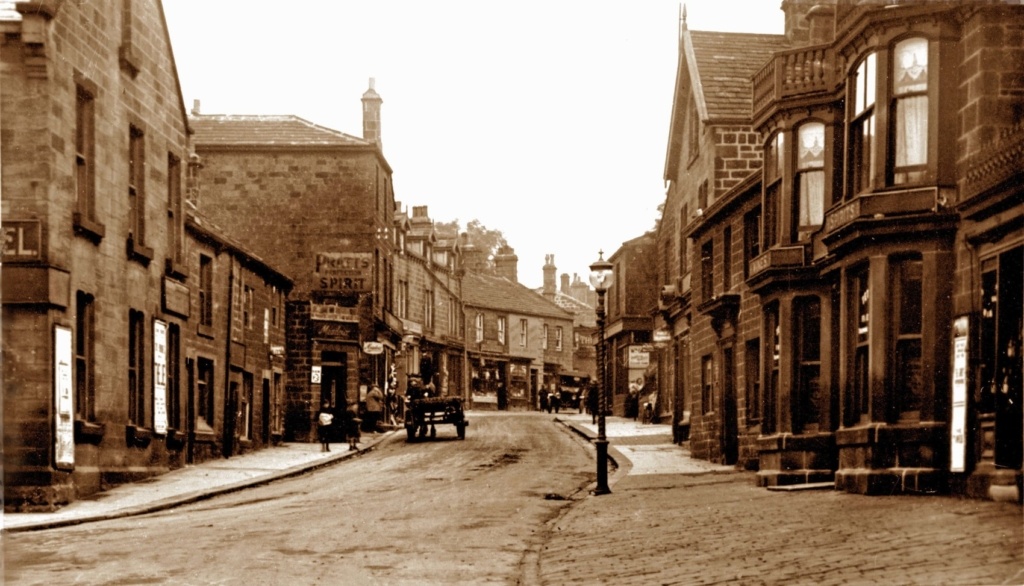
The Green
The hub of Horsforth over the centuries
How or why The Green became the hub of Horsforth over the years, is not known, but it possibly has something to do with its location close to the important routeway located on a north-east/south-west axis, pointing towards the ford and crossing the River Aire at the bottom of Calverley Lane.
Three ‘greens’ developed along this route – Well Green, Willow Green and Chapel Green – but it was Chapel Green which eventually became by far the most important of the three. The existence of a duck pond, a much-used watering place for cattle, may help to explain its rise to prominence.
The Green also seems to have been the gathering place for festivities surrounding Horsforth’s feast on or around 18th August each year, so by the mid-18th century, it is not surprising that it sprang to life as the commercial centre of Horsforth.
By 1780, The Green boasted a blacksmith, butcher, tobacconist and grocer, later giving way to an influx of professional people during the reign of Queen Victoria, when a doctor, solicitor, auctioneer and a druggist established businesses there.
Also, occupying a prominent position, were two inns – the Old King’s Arms and the Black Bull – the latter being of particular interest to Pickard Properties and in our ownership since 2008. It now forms the basis of our highly successful private rented sector (PRS) development created by partly refurbishing and partly redeveloping the existing buildings, and we hope, assuring its future as a Horsforth landmark for at least the next 50 years.
Known as The Masons on The Green, our niche residential scheme includes five luxury apartments, built above the Black Bull Inn, together with three town houses, which occupy what was formerly the beer garden and coach house of the inn and addressed as Drury Lane, Horsforth.
The Black Bull Inn has a story of its own
The Black Bull Inn was built on land belonging to none other than Walter Stanhope – the son of John Stanhope who had become part owner of the former Kirkstall Abbey lands in Horsforth following the dissolution of the monasteries.
In May 1654, Walter Stanhope granted permission for a cottage to be built on the parcel of land ‘west of the pinfold and lieing to the highway leading down to the Chappel of Horsforth on the east side’.
This is how the building, which was later to become the Black Bull Inn, first came about. Although originally built as a solitary dwelling cottage, many changes and additions later followed, until Ingram Lapish, a mason, bought the premises on 10th November 1739 and proceeded to build an extension to the original building. His two sons inherited the building on his death, each acquiring one end of the building and when one brother sold his half to the other, a license was granted in 1758 so that John Lapish was able to open a beer house.
In later years, it was to be renamed The Black Bull, as recorded in the Leeds Trades Directory of 1834. At one stage it boasted a fine bowling green, laid out on the site of the old village pinfold, together with a large kitchen garden, which was a common feature of inns in those days.
It was eventually sold to Joshua Tetley & Son Ltd on 22nd September 1896. Some years later, it was acquired by Mitchells & Butlers, one of the largest UK operators of managed pubs, who sold it to Pickard Properties in 2008 and we have continued to operate it as a leisure venue since then.
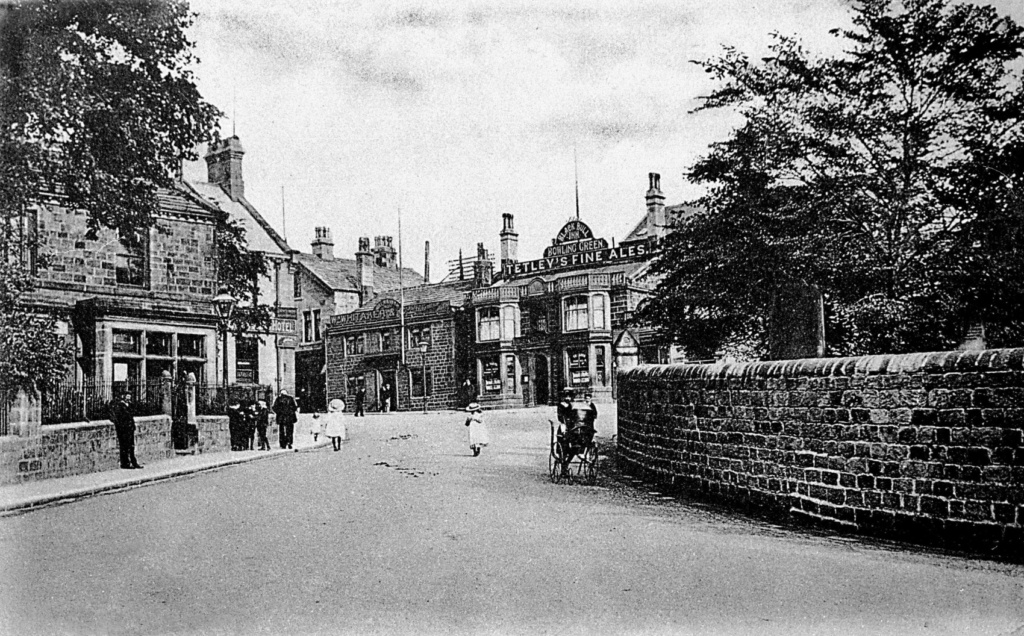
Written in Stone
A final story worth re-telling about The Black Bull came about when Pickard Properties began construction work for its three town houses.
On Drury Lane, around the corner from The Black Bull where the houses are located, there was a wall between the two terraced rows of houses, which would have been a cart entrance to the rear of the Bull. Prior to construction commencing, there had been a stone window lintel in this wall with the initials and date CS 1901.
This refers to one, Charles Somers, a former licensee of the pub from 1899. Prior to this, the landlord had been Mr William Stead (his name is clearly visible above the door on the large picture). However, in the 1891 census, Charles Somers was recorded as being a tram conductor, so he must have met with some good fortune to become a licensee.
When he died in 1910, he left the sum of £8,530 – 14s – 2d to his American–born wife, which was a considerable sum of money. He had been living in the pub with Emmie Louise, from Detroit, USA, who had been married before to a former surgeon in the Civil War. The pair came to England but Max Rosvally, her husband, died in 1892 in Leeds, leaving her free to re-marry.
Realising that there was bound to be a story behind this lintel, we kept it in a safe place and reinstated it into the new building to preserve it for future generations.
From research undertaken by the Horsforth Museum into Emmie’s German American husband’s background, it is hard to believe that she would have ever set foot into a public house!
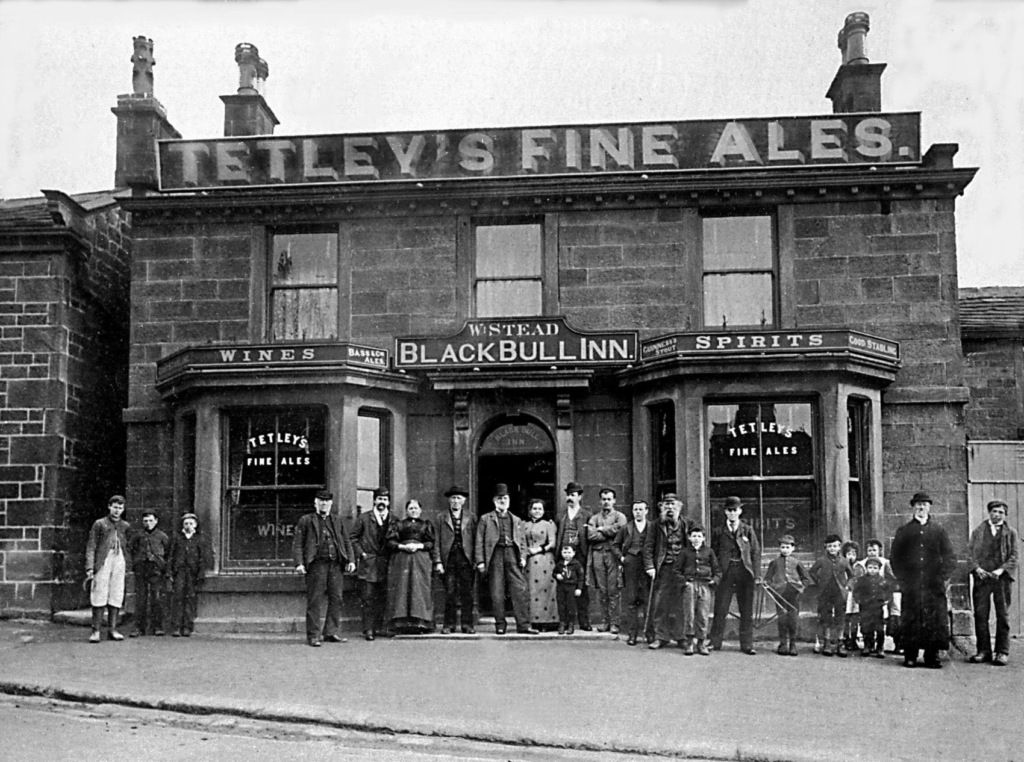
Acknowledgements
Several sources have been used to compile this short history of the Horsforth area and The Black Bull. Thanks to:
Horsforth Museum – particularly Susan Watson, a volunteer
www.leeds-list.com – What Horsforth Used to Look Like
Yorkshire Life
Wikipedia
www.secretleeds.com
The Green by Alastair Laurence, Robert Price, Bernard Ryan and Christopher Townsley
The Inns, Taverns and Public Houses of Horsforth
Leeds City Council – Horsforth – Conservation Area Appraisal and Management Plan

Register your interest
We’ll let you know when more properties become available at The Masons On The Green
"*" indicates required fields


